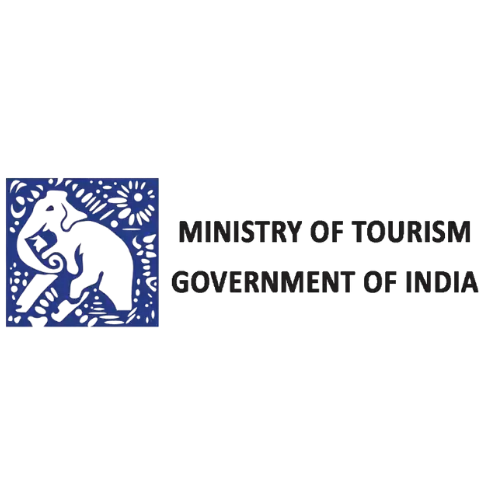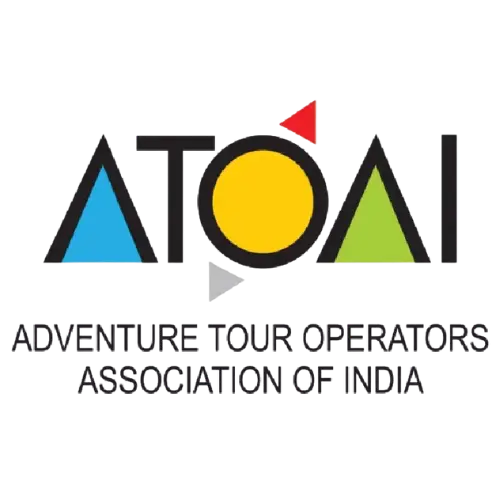Chitkul to Harshil








Lamkhaga Pass Trek – A Hidden Gem of the High Himalayas
The Lamkhaga Pass Trek is one of the toughest and most remote treks in the Indian Himalayas. Situated at an altitude of 17,320 ft, this high-altitude corridor lies on the Indo-China border and connects Harsil in Uttarakhand with Chitkul in Himachal Pradesh’s Kinnaur Valley. Known for its raw beauty, challenging trails, and untouched landscapes, Lamkhaga remains a dream trek for experienced adventurers seeking a true Himalayan test.
The Route – From Harsil to Chitkul (or Vice Versa)
The Lamkhaga Pass can be approached in two ways:
- From Harsil to Chitkul: Starting in the lush Garhwal Himalayas and ending at the last inhabited village of India in Kinnaur.
- From Chitkul to Harsil: Beginning in the Baspa Valley of Himachal and ending in the apple orchards and pine forests of Uttarakhand.
The trek spans nearly 90 km and takes trekkers across glaciers, meadows, rivers, and high mountain passes.
This route has historical significance as well Marco Pallis, a Greek-British mountaineer, crossed Lamkhaga in 1931, making it a classic Himalayan passage between Gangotri and Kinnaur. Landmarks like Wilson’s Cottage in Harsil (built in 1864) and the old wooden bridges over the Bhagirathi River add cultural charm to this wilderness trail.
Nature & Landscapes – Untouched Himalayan Wilderness
The Lamkhaga Pass Trek is unlike any other, thanks to its dramatic contrasts in terrain and landscapes.
- Snow-capped peaks: Towering mountains like Kailash, Matri, and Shrikanth dominate the skyline.
- Crystal streams & glaciers: The trail is dotted with pristine rivers and glacial meltwaters.
- Sheer cliffs & valleys: Narrow passages carved into mountains with rock walls on one side and deep gorges on the other.
- Floral wonderland: The Jalandhari Valley blooms into a sea of flowers after the monsoon, adding color to the rugged terrain.
Every step feels like a journey into the untouched heart of the Himalayas.
Cultural & Spiritual Touches
The trek is not just about nature it’s also a cultural journey:
- Chitkul: The last inhabited village of India, famous for its wooden cottages and Buddhist temples housing ancient deities of Lord Buddha.
- Rani Kanda: A Himalayan settlement beside the Baspa River, known for lush meadows and wooden bridges.
- Dumti: A campsite with an ITBP-maintained cricket ground at 4,000 m, and a small temple dedicated to Karu Devta.
- Harsil: A picturesque Himalayan village nicknamed “Mini Switzerland of India,” located on the banks of the Bhagirathi River and surrounded by apple orchards.
These stops add depth to the trek, blending Himalayan spirituality with raw adventure.
The Adventure of Lamkhaga Pass
Lamkhaga is graded “difficult” and is suitable only for trekkers with prior high-altitude experience. The real challenge begins after Lamkhaga Base Camp, where the ascent to the pass is steep, icy, and relentless. Unlike many other treks, there are no shelters at the base, only wild landscapes and glacier-fed terrain.
- Expect long snow climbs on steep gradients.
- Trek through remote, uninhabited valleys like Gundar.
- Camp on frozen meadows and beside roaring rivers.
- Descend through glaciers, caves, forests, and waterfalls into Harsil.
It is this raw, demanding nature of the trek that keeps it pure, unspoiled, and incredibly rewarding.
Harsil – The Final Reward
After crossing Lamkhaga, the trek concludes at Harsil, a hidden paradise in Uttarakhand. Known for its quiet charm, Harsil sits at the confluence of the Jalandhari Gadh and Bhagirathi rivers.
- Snow peaks like Shrikanth, Matri, and Kailash stand tall above.
- Nearby, the sacred Kedarnath range adds spiritual energy to the landscape.
- Apple orchards, pine forests, and meadows give Harsil a postcard-perfect charm.
No wonder Harsil is often called “Mini Switzerland of India.”
Why Choose Lamkhaga Pass Trek?
- Untouched & Remote: Far from commercial trekking routes.
- Adventure & Challenge: One of India’s toughest treks at 17,320 ft.
- Scenic Diversity: From Baspa Valley meadows to Garhwal glaciers.
- Cultural Richness: Villages, temples, and legends along the way.
- Pure Wilderness: Minimal human impact keeps it pristine.
The Lamkhaga Pass Trek is not just a trek it is an expedition through history, culture, and some of the wildest landscapes of the Himalayas. It is demanding, it is raw, and it is absolutely unforgettable.
For those who are prepared, Lamkhaga is a once-in-a-lifetime journey that will test your endurance, expand your spirit, and reward you with Himalayan grandeur like no other.
Short Itinerary
Day 1: Chitkul to Dumti - 7 h trek
Day 2: Dumti to Gundar (4,400 m)- 5-6 h trek
Day 3: Gundar (4,400 m) to Lamkhaga Pass Base Camp in Kinnaur (4,800 m) - 6-7 h trek
Day 4: Acclimatization day
Day 5: Lamkhaga Pass basecamp (Kinnaur) to Lamkhaga Pass basecamp (Gangotri Side) via Lamkhaga Pass (5,282 m)- 8-9 h
Day 6: Lamkhaga Pass Base Camp to Kyarkoti (3,820 m)- 7-8 h
Day 7: Kyarkoti to Harsil (2,400 m); drive to Gangnani- 6-7 h
Day 8: Harsil/Gangnani to Dehradun drive- 7 h
Detailed Day-by-Day Itinerary
Day 1: Dehradun to Harsil
- Altitude: 2,620 m / 8,600 ft
- Distance: 231 km
- Duration: 9–10 hrs (Drive)
Your journey begins with a long but scenic drive from Dehradun to Harsil, a charming Himalayan village in the Bhagirathi Valley. The route winds through pine forests, terraced fields, and riverside roads, offering glimpses of Uttarakhand’s pristine beauty. Harsil, often called the “Mini Switzerland of India,” sits at the confluence of the Jalandhari Gadh and Bhagirathi rivers, surrounded by apple orchards and snow-covered peaks. Overnight stay in Harsil.
Day 2: Harsil to Lal Devta Camp
- Altitude: 3,000 m / 9,840 ft
- Distance: 7 km
- Duration: 5–6 hrs (Trek)
The trek begins with a gradual ascent from Harsil to Lal Devta Camp. The trail passes through forests of oak and pine, with occasional clearings that open up to mountain views. Along the way, you’ll come across small streams and lush meadows, making this day an excellent warm-up for the challenges ahead.
Day 3: Lal Devta Camp to Kyarkoti
- Altitude: 3,480 m / 11,415 ft
- Distance: 12 km
- Duration: 6–7 hrs (Trek)
A longer trekking day takes you deeper into the valley. The trail from Lal Devta to Kyarkoti is lined with alpine meadows and glacial streams. Kyarkoti is a wide campsite offering spectacular views of snow-clad peaks and serves as a perfect base to soak in the rugged beauty of the Garhwal Himalayas.
Day 4: Kyarkoti to Lamkhaga Base Camp
- Altitude: 4,420 m / 14,500 ft
- Distance: 11 km
- Duration: 5–6 hrs (Trek)
The trail now enters high-altitude terrain, with rocky moraines and snow patches. As you ascend, vegetation becomes sparse, and the raw, icy landscapes of the Lamkhaga region start to unfold. Lamkhaga Base Camp sits amidst glaciers and towering ridges—a stark yet beautiful campsite that prepares you for the big climb ahead.
Day 5: Acclimatization at Lamkhaga Base Camp
- Altitude: 4,420 m / 14,500 ft
- Activity: Rest & Acclimatization
This day is dedicated to acclimatization. At such high altitudes, rest is crucial to adapt your body to thinner air and prepare for the Lamkhaga Pass crossing. Use the day for short hikes around the campsite, stretching, and light exploration.
Day 6: Lamkhaga Base Camp to Lamkhaga Pass (5,381 m) to Dundhar Camp
- Altitude: Lamkhaga Pass – 5,381 m / 17,650 ft, Dundhar Camp – 4,600 m / 15,100 ft
- Distance: 13 km
- Duration: 7–8 hrs (Trek)
This is the most challenging and rewarding day of the trek. The steep ascent to Lamkhaga Pass involves walking over snow, ice, and scree slopes. At the top, you’ll be greeted with panoramic views of Garhwal and Kinnaur ranges—a once-in-a-lifetime sight. After soaking in the views, descend carefully towards Dundhar Camp, set in a glacial valley.
Day 7: Dundhar Camp to Dumti Camp
- Altitude: 4,035 m / 13,240 ft
- Distance: 12 km
- Duration: 4–5 hrs (Trek)
A relatively moderate day of trekking takes you across glacial streams and rocky terrain. Dumti is known for its wide valley views and peaceful ambiance. Nearby stands a small temple dedicated to Karu Devta, where ITBP personnel and locals often offer prayers.
Day 8: Dumti Camp to Rani Kanda
- Altitude: 3,638 m / 11,940 ft
- Distance: 9 km
- Duration: 4–5 hrs (Trek)
The trail descends towards Rani Kanda, a lush Himalayan meadow situated on the banks of the Baspa River. Known for its rolling grasslands, wooden bridges, and glacial streams, this is one of the most picturesque campsites of the trek.
Day 9: Rani Kanda to Chitkul (Roadhead)
- Altitude: 3,435 m / 11,270 ft
- Distance: 10 km
- Duration: 5–6 hrs (Trek)
The final day takes you through alpine forests, open valleys, and mountain trails before reaching Chitkul, the last inhabited village of India in Kinnaur. Famous for its wooden cottages and Buddhist temples, Chitkul is the perfect place to end this incredible expedition. From here, trekkers can drive towards Shimla or back to Uttarakhand.
How to prepare yourself for Lamkhaga Pass Trek
Bali Pass Trek is not an extremely hard trek, however, you need to prepare yourself physically as well as mentally to achieve the demanding trails of this exotic journey. You will have to cover around 9-10 km and the altitude will go high from 5100 ft to a maximum of 17,322 ft in a short span of mere 5 days. To make this whole excursion, smooth, joyful, and less tiring, train yourself accordingly.
Cardiovascular stamina:
You need to develop the endurance to run almost 8-10 km in one hour. Stamina doesn’t build in a day. You need to start exercising at least a month prior to the commencement of the trek. Sprint is the best choice to boost your stamina however jogging will help to keep your energy up during the longer paths. Also, if you are just starting to maintain a fitness regime then jogging is the basic workout you should begin. You may add cycling and swimming in your routine to avoid boredom and to make your body more adaptive.
Strength:
Another area to cover in the process of your body development is to train your mind and body to tackle with the roughness of odd and unsteady tracks of mountains. You will have to walk these detours carrying your backpack on your shoulders, which can cause muscle soreness and ache. Strengthening your legs by working out regularly is the only option to prevent it. Squats can make back thigh and lower legs muscles so start doing 2-3 sets of squats regularly with 8-10 repetitions. Walking up and downstairs is another option to add in your daily routine to strengthen your muscles.
Flexibility:
Flexibility is just like an extra topping on the Pizza in your schedule of body training. It does not only relax the muscles but helps you to open your body easily which will lead you to walk at a fast pace and cross even the roughest terrains comfortably. Flexibility can be induced by stretching muscles on a daily basis. This will help you lose extra inches on your body so you will be lighter to embrace this detour of Lamkhaga Pass Trek.
Essential Things to carry for Lamkhaga Pass Trek
Essentials are the first priority without them trek cant be started
- A Backpack:
For this extraordinary trek, your first requirement is a tough and strong backpack. A 20-30 liter bag is sufficient for the journey. The bag should be of waterproof yet light weight-stuff and must have good shoulder and hip support with ample small quick-access pockets.
Tip- Backpack can be bought of any brand like Decathlon, Wildcraft, Woodland, etc.
- Shoes:
Shoes are the next important item for the preparation list of Lamkhaga Pass Trek. We need a pair of shoes that are rough from the outer side but soft from inside, to make the journey comfortable and reliable. Good grip, adequate ankle support, water-resistance, and snow handling are the other qualities we should look for in our trekking shoes.
Tip- Decathlon has a good series of trekking shoes you can purchase from there. Eg- Trek series and MH series are good options.
- Clothes:
Trekking can be the best adventure of one’s life, however, it could be a disaster without the right choice of layers for the uncertain weather of the mountains.
- T-Shirt as a Baselayer:
Carry at least 3-5 t-shirts as per the length of the excursion. We prefer you to wear full sleeve collared t-shirts as they help to protect the body from sun harmful rays. If you don’t like to wear full sleeve t-shirt then you may buy sleeve covers, that will help to protect skin from the sun. Dry-fit t-shirts are easy to carry as they tend to be light in weight and they dry quickly as compared to 100% cotton.
- Woolens and Jackets as an Insulation layer:
A padded jacket is appropriate for this trek which can be of non-water resistance material. But an outer padded jacket would serve the purpose of keeping the wind and the cold out. A couple of thin layer sweaters too can be handy in the high cold temperature at the altitude of 15000 ft. We discourage to pack the hand-knitted bulky sweaters.
We don’t prefer down and fur jackets as they are very costly and need maintenance.
- Trek Pants:
2-3 pairs of pants in this trek are suggested for the whole excursion. Pure cotton pants and jeans are to be avoided while shopping for trekking because hard and heavy stuff of these pants will create difficulties during the hill climbing. Cargo and quick-dry trousers top the list for trekking pants, apart from these stretchable pants can serve as thermal bottoms. Pants with zipper pockets prove to be useful to keep the tiny essentials for the way. You should always buy dark colored pants for trekking as they will not get dirty quickly.
Other Mandatory Accessories, Without these Trekking, Seems to be Almost Impossible:
- Caps:
Our head is most vulnerable to heat, whether it is sultry hot or too cold conditions. So, suncap and woolen cap or Balaclava make the next compulsory item on our list. The suncap protects the eyes and head in the sharp direct sunlight, while, woolen caps protect head and ear from the attack of cold wind and snow in the winter seasons during the trekking.
-
Glasses:
Glasses do not only protect eyes from high-speed wind, but they become a crucial item to carry along to shield eyes from snow blindness (occurs by overexposure in high-frequency sun rays inside the wide snowfield). Only half an hour of exposure of naked eyes can make lead to this severe condition. We recommend buying sunglasses with UV protection for extra protection.
In case you wear spectacles, buy oversize glasses which can be worn over them. If you wear contact lens, you don’t need to worry about them, because you can easily change them in your tent if you are habitual and the lens solution doesn’t freeze up there. However, you need to carry enough cleaning solution to clean your fingers and lens.
-
Socks:
It is best to carry woolen socks along with the regular sports socks. Sports socks provide the stuffiness to the feet in the shoes to walk the longer detours comfortably and woolen socks help to keep the body warm while sleeping. Two layers of sports socks can also work equally well in the dearth of woolen socks. You should always buy synthetic socks or at least mix with synthetic stuff because they dry quickly and do not soak much water as compared to pure cotton socks.
-
Headlamp:
The handheld torch is often the first choice to carry along in the trek, but a headlamp is more useful. I would help you to keep your hand free in the time of night to handle things like man tents, do dishes and carry other essential things. Do not buy headlamps with a beam light, instead buy a headlamp that covers large areas.
-
Trekking Pole:
A trekking pole (A Pair ) for hiking is as helpful as a finger held by an infant while learning to walk. The unsteady trails and steeps of the mountains can be arduous to walk but a pole can make your journey pleasant. The usage of a pole, while climbing can almost reduce physical fatigue by 40-50 percent People use only one pole as a normal practice but using two poles makes you walk even faster by supporting body balance.
-
Raincover or Rainwear:
The weather in the hills is so uncertain that it can rain to floods in some minutes even on a sharp sunny day. So carry a rain cover for this trek. Saving your backpack is also very important because your bag is the only support you can rely on during the whole trek. Some people carry different rain covers for them and their backpack however recommend you to carry a Poncho. It is a large size rain cover which can cover your body along with your backpack till knees. We discourage carrying rain pants, they will hinder your pace by making you walk uncomfortably and also the dry fit pants dry quickly.
-
A daypack:
A daypack can be used when you can't access your main backpack. Some people tend to offload their backpacks to the porters and for the hiking, you will have to keep the backpack at the campsite. In these scenarios, a 20-30 liters small daypack will help you to carry the essential things for the day.
Other Important Requirements
-
Cutlery and Water Bottles:
-
Carrying cutlery is also mandatory on this trek. Carry lightweight steel cutlery(a tumbler or mug, a plate, and a spoon) and avoid having plastic cutlery on your packing list. Plastic things tend to attract more germs and hard to clean. Along with these pack two 1-liter water bottles to keep yourself hydrated for longer hiking. We recommend carrying one of thermos which can help you carry warm water in the cold weather.
-
Toilet Kit:
You should gather only basic toiletries like toothpaste and toothbrush, a soap, a moisturizer, a toilet roll, a deodorant, a facewash, oil, a paper soap, or sanitizer in your toilet kit. Collect the small size and quantity of all these above-mentioned things to keep it light. Taking a bath every day is not feasible up there so do not load your kit with soap and shampoos.
Women can carry sanitary pads or menstrual cups if in case their periods are falling in during the trek date. Always carry 4-5 plastic poly bags to bring back used pads or any other waste generated during the whole journey. Keep in mind not to throw your used items to preserve the environment in the mountains.
-
Medical Kit:
- Diamox - To prevent AMS
- Dolo 650 - For Fever
- Avomine - For motion sickness
- Avil 25mg - For allergies
- Combiflam - Pain killer
- Disprin - For headache
- Digene - For acidity
- Norflox TZ & Lomofen - (diarrhea)
- ORS
- Omez/ Rantadine - (antacids)
- Crepe bandage - 3 to 5 meters
- Gauze - 1 small roll
- Band-aids - different sizes
- Cotton - 1 small roll
- Betadine or any antiseptic cream
- Moov/Volini spray (aches, & sprains)
- Knee caps
- Hot water bag in winter if needed
Cancellation Policy at Tripophilia
- Cancellation 30 days beforethe start date of the trek — Get a cash refund with 10% cancellation charges.
- Cancellation between 29 days and 15 days beforethe start date of the trek — Get a cash refund with 30% cancellation charges.
- Cancellation between 14 days and 1 day beforethe start date of the trek — Get a cash refund with 50% cancellation charges.
- Cancellation on the start day of the trek, or no showon the start day of the trek — Unfortunately, no refund or voucher.
- Cancellation on the start day of the trek, or no showon the start day of the trek — Unfortunately, no refund or voucher.
Your Trek Fees Includes :
- Accommodation - Your stay is included for the entire trek from Day 1 to Day 8 ( Chitkul to Harshil ). You will be staying in a lodge on Day 1 at Chitkul and on Day 8 at Harshil and camping on the remaining days of the trek.
- Meals - Your meals are included from Dinner on Day 1 to Breakfast atLast Day. We provide vegetarian nutritious food throughout the trek.
- Camping Charges - Forest Permits and camping charges are included.
- Trekking Equipment - All our trekking equipment is of high quality. Our tents and sleeping bags can withstand temperature as low as -15 ºC. You will also be provided gaiters, crampons, ropes, axes, etc. as required.
- Safety Equipment- In case of emergency, first aid and medical kit will be available at every campsite.
Your Trek Fees Does not Include :
- Transport To and Fro Base Camp- Transport to reach the basecamp and back. If availing transportation from Tripophilia then you will be picked and drop back to Dehradun.
- Food- Any extra food purchased during the journey to reach Basecamp and back.
- Backpack Offloading- If you wish to offload your backpack there is additional option mentioned.
- Any type of Personal Expense.
- Accommodation at Dehradun or Shimla.
- Any Expense apart from the Inclusion list.
Here is what trekkers have to say about their experience at Lamkhaga Pass Trek
Available dates
Click on available dates to Register
- What the colours mean
- Available:Registration is on.
- Full:Indicates the group is full. No further slots are likely. A full group has 18 members.
Dates not suiting you? Click here to customize your trip.






